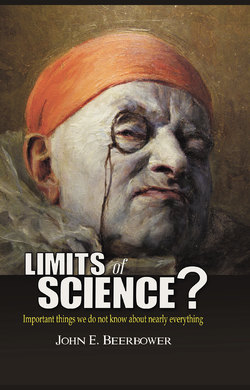Читать книгу Limits of Science? - John E. Beerbower - Страница 48
На сайте Литреса книга снята с продажи.
The methods of Newton and Galileo
ОглавлениеThis characterization of a theory might sound strange or contrived, but it is essentially a description of Newtonian or classical mechanics and is an apt characterization of much of modern science.23 Modern science has been attributed the development of a new scientific method that, with a bit of overstatement, has been described as “fashioned almost entirely by Galileo Galilei” in the early seventeenth century. Kline, Mathematics, p.284. See, id., pp.284–290, 337–51. Galileo concluded that matter (shape and size) and motion were phenomena of the natural world that existed independent of man’s perception, so they were suitable subjects for science. Id., p.284. He was interested in quantitative relationships based upon experimentation and observations (rather than introspection and contemplation). So, he focused on concepts that were quantifiable or measurable, like mass, speed, time, distance, etc.—concepts fundamentally different than the qualities that were the focus of Aristotelian philosophy, like fluidity, potentiality and purpose. Id., p.288. And Galileo believed that the quantitative relationships in Nature could be expressed mathematically.
Galileo’s interest was essentially descriptive. The question was not why but how. Thus, mathematical formulas were perfectly suited to the pursuit: “formulas do not explain; they describe.” Id. “[T]hrough Galileo … the connection between math and the physical world became solidified.” Mazur, The Motion Paradox, p.7. See also, id., pp.62–5. Of course, it was Newton, building on the work of Galileo and other Italian scientists of the fifteenth and sixteenth centuries, who put together the pieces and created the science of Dynamics. See, e.g., Whitehead, An Introduction to Mathematics, pp.30–31.
Newton similarly believed that mathematics underlay the design of the natural world, and he believed that the quantitative principles of that design should be explored through observation and experimentation. He also focused on matter and motion. To the work of Galileo, Newton added the Second Law of Motion and the more general law of gravity. Kline, Mathematics, pp.337, 359. The result was a set of principles that enabled the description of all motion of matter. Like Galileo, Newton utilized axioms and, through mathematics, deduced the laws of motion. The important point here is the nature of the resulting science, which is mathematics with great predictive and descriptive power, but no explanation of the underlying phenomenon itself.
